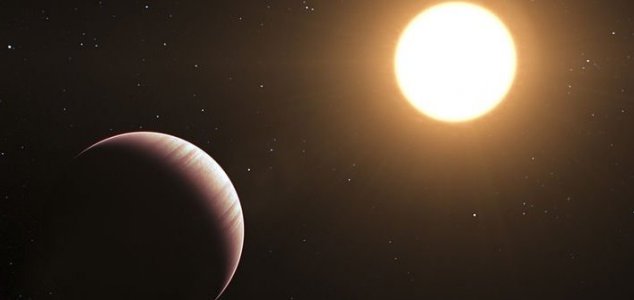Extraterrestrial
June 12, 2019 · 28 comments
28 comments

The habitable zone is not quite as habitable as previously believed. Image Credit: ESO/L. Calcada
In practice however, while this might be sufficient for single-celled microbes, the actual conditions required for complex life forms to develop are actually much more specific and harder to come by.
The main problem is that many 'habitable' worlds have high levels of toxic gas, especially those that exist nearer to the edge of the zone traditionally considered to support life.
"To sustain liquid water at the outer edge of the conventional habitable zone, a planet would need tens of thousands of times more carbon dioxide than Earth has today," said study lead researcher Edward Schwieterman.
"That's far beyond the levels known to be toxic to human and animal life on Earth."
Taking this in to account, the size of the habitable zone around a star shrinks to half the size for simple animal life and a mere third of the size for complex life forms such as humans.
Based on these new figures, potentially habitable worlds around some of our nearest stellar neighbors such as Proxima Centauri can no longer be considered capable of hosting complex life.
Source: Live Science | Comments (28)
ET 'habitable zone' is smaller than thought
By T.K. RandallJune 12, 2019 ·
 28 comments
28 comments
The habitable zone is not quite as habitable as previously believed. Image Credit: ESO/L. Calcada
According to a new study, many planets in the so-called habitable zone can only support single-celled organisms.
Up until now, the habitable (or 'Goldilocks') zone of a star has been defined as the region in that star's orbit in which the temperature is sufficient for liquid water to exist on a planet's surface.In practice however, while this might be sufficient for single-celled microbes, the actual conditions required for complex life forms to develop are actually much more specific and harder to come by.
The main problem is that many 'habitable' worlds have high levels of toxic gas, especially those that exist nearer to the edge of the zone traditionally considered to support life.
"That's far beyond the levels known to be toxic to human and animal life on Earth."
Taking this in to account, the size of the habitable zone around a star shrinks to half the size for simple animal life and a mere third of the size for complex life forms such as humans.
Based on these new figures, potentially habitable worlds around some of our nearest stellar neighbors such as Proxima Centauri can no longer be considered capable of hosting complex life.
Source: Live Science | Comments (28)

The Unexplained Mysteries
Book of Weird News
AVAILABLE NOW
Take a walk on the weird side with this compilation of some of the weirdest stories ever to grace the pages of a newspaper.
Click here to learn more

Support us on Patreon
BONUS CONTENTFor less than the cost of a cup of coffee, you can gain access to a wide range of exclusive perks including our popular 'Lost Ghost Stories' series.
Click here to learn more
Israel, Palestine and the Middle-East
Ancient Mysteries and Alternative History
Other World News
Russia and the War in Ukraine
Total Posts: 7,768,282 Topics: 325,021 Members: 203,765
Not a member yet ? Click here to join - registration is free and only takes a moment!
Not a member yet ? Click here to join - registration is free and only takes a moment!


































Please Login or Register to post a comment.